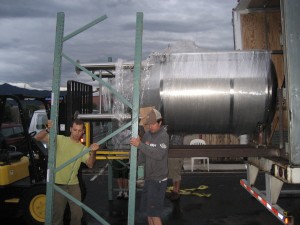How to Build a Brewery 101
https://upslopebrewing.com/wp-content/themes/corpus/images/empty/thumbnail.jpg 150 150 upslopebrewing upslopebrewing https://secure.gravatar.com/avatar/f549539a04562a151e1b7b4df20b2009?s=96&d=mm&r=g When you boil it down, what is a brewery really? It’s a commercial kitchen. It’s a chemistry lab. It’s a crossroads for beer enthusiasts. Most of all, though, it’s a manufacturing facility. There are raw materials, brewing and fermentation processes, and finished goods. There are first articles, process checkpoints, and quality assurance. There are brewing kettles, pumps, filters, heat exchangers, chillers, and fermentation tanks.
When you boil it down, what is a brewery really? It’s a commercial kitchen. It’s a chemistry lab. It’s a crossroads for beer enthusiasts. Most of all, though, it’s a manufacturing facility. There are raw materials, brewing and fermentation processes, and finished goods. There are first articles, process checkpoints, and quality assurance. There are brewing kettles, pumps, filters, heat exchangers, chillers, and fermentation tanks.
Our little 7 barrel system grew up a little bit last night. While 217 gallons brewed at one time seems like more than you could fit in your fridge, our system is the size of what you would see in many brewpubs. From our very first brew back in October until now, we have been limited to brewing three times per week with our existing equipment. Where’s the bottleneck? No, it’s not in our manual canning system. It’s in our fermenters. Every time that we brew a batch of beer, we pump it into one of our 7 barrel fermenters. There the beer will remain, happily fermenting for 3-4 days, plus another 3-4 days for conditioning. So we will brew and brew and brew, and once the fermenters are full, we can’t brew again until the conditioning is complete and we can pump the flat, warm beer to another tank for carbonation.
The fermenter that you see in the photo above is one of two new tanks that ferments 15 barrels of beer. This doubles our current fermentation capacity, and hence, our production. The beauty of all that stainless steel is that it will allow us to sell our hand-crafted ales to more restaurants, taverns, and liquor stores. It will also bring a steady stream of seasonal ales to our tap room. Doesn’t that just make life a little better for all of us?



